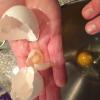Carefree Play in an Adult World (revision)
By CalliopeOctober 1, 2016 - 21:43

Last class, we performed skits for the class of what we interpreted as play. In one skit, there were four children who were going to play a make believe game. However, they argued on who got to be who and changed their minds about which character they wanted to be. Similarly, in another skit, there were three children who pretended to Beyoncé, Joan of Arc, and a princess. These make believe games made up most of playing for many children, including me.








